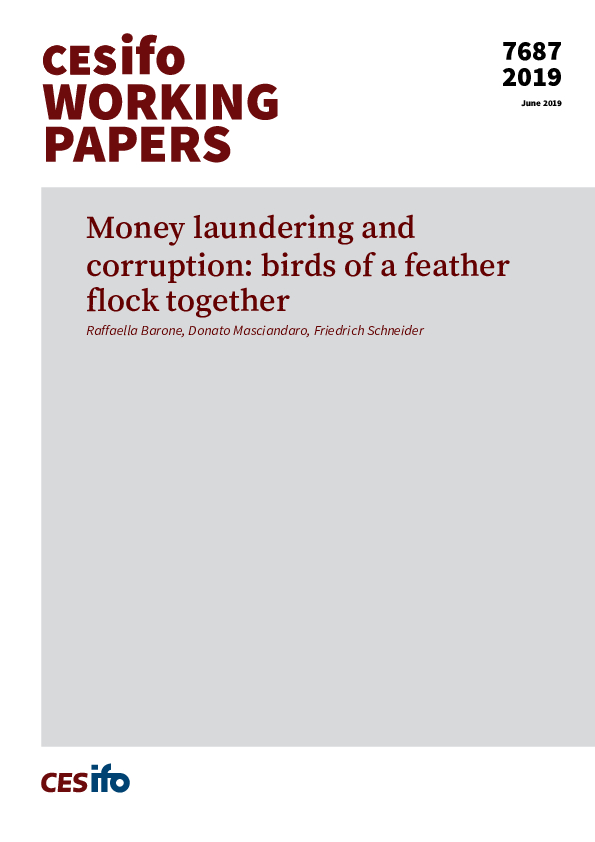Money laundering and corruption: birds of a feather flock together
CESifo, Munich, 2019
CESifo Working Paper No. 7687

This paper is the first to analyse the three-way relationship among money laundering, anti-money-laundering efforts and corruption. On the one hand, if we assume that the goal of criminals involved in corruption is to minimize the probability of being detected, then corruption represents a demand for money laundering (trigger effect), while money laundering can serve as an effective way to clean the revenue from corruption for re-investment (multiplier effect). On the other hand, criminals can try to maximize the likelihood that anti-money-laundering activities will be ineffective. Corruption can be an effective device for maximizing this likelihood, as organized crime may corrupt financial institutions – both regulators and regulated firms – in order to prevent crime detection (accelerator effect). The paper proposes a novel theoretical framework for these interconnections, which is then used to simulate the three effects in 101 countries for the period 1990 to 2040.
Public Finance
Public Choice